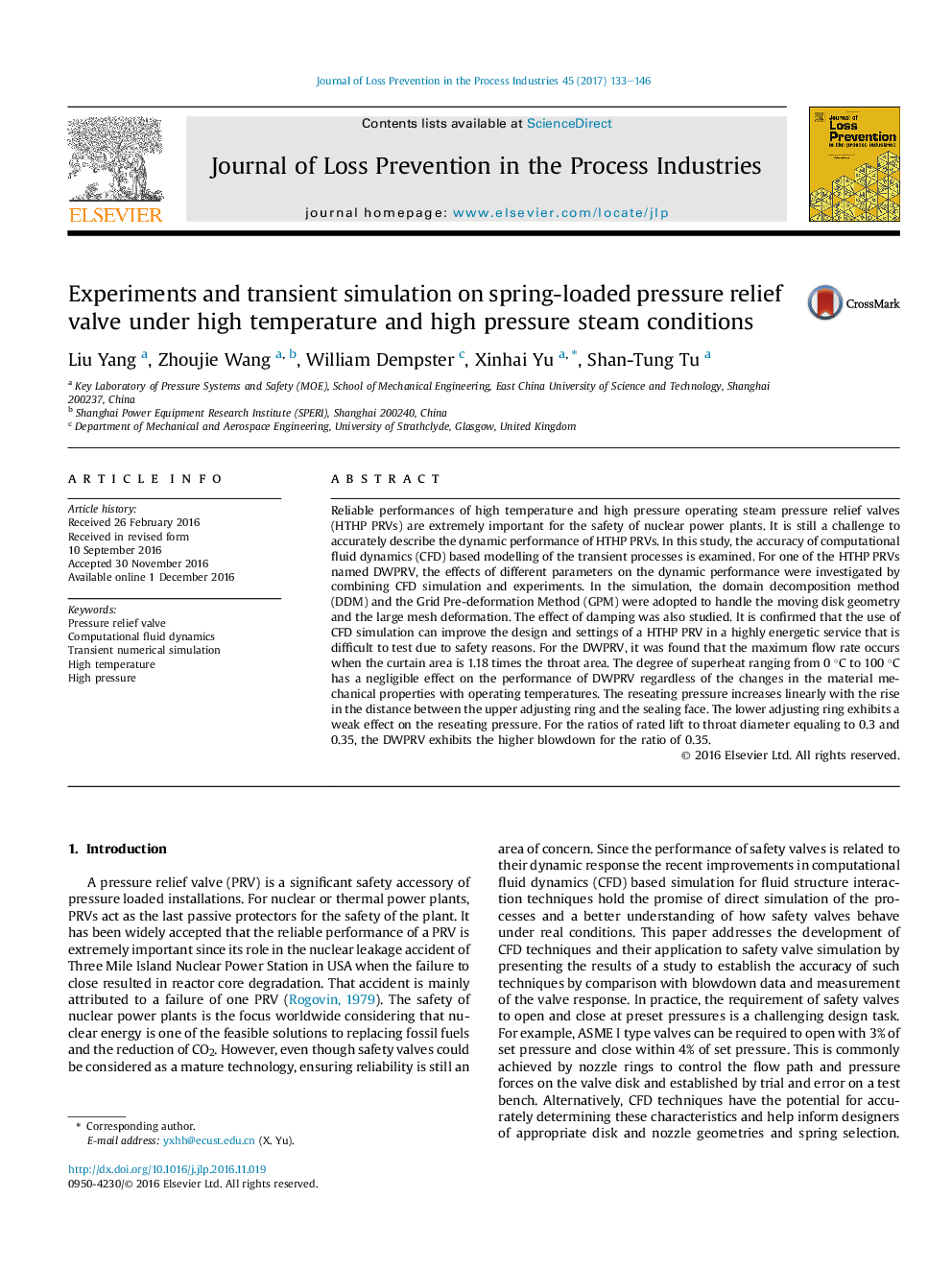| Article ID | Journal | Published Year | Pages | File Type |
|---|---|---|---|---|
| 4980247 | Journal of Loss Prevention in the Process Industries | 2017 | 14 Pages |
â¢CFD simulation can improve the design and settings of a HTHP PRV.â¢Maximum flow rate of HTHP PRV occurs when curtain area is 1.18 times throat area.â¢Upper adjusting ring has more influence on reseating pressure than lower adjusting ring.
Reliable performances of high temperature and high pressure operating steam pressure relief valves (HTHP PRVs) are extremely important for the safety of nuclear power plants. It is still a challenge to accurately describe the dynamic performance of HTHP PRVs. In this study, the accuracy of computational fluid dynamics (CFD) based modelling of the transient processes is examined. For one of the HTHP PRVs named DWPRV, the effects of different parameters on the dynamic performance were investigated by combining CFD simulation and experiments. In the simulation, the domain decomposition method (DDM) and the Grid Pre-deformation Method (GPM) were adopted to handle the moving disk geometry and the large mesh deformation. The effect of damping was also studied. It is confirmed that the use of CFD simulation can improve the design and settings of a HTHP PRV in a highly energetic service that is difficult to test due to safety reasons. For the DWPRV, it was found that the maximum flow rate occurs when the curtain area is 1.18 times the throat area. The degree of superheat ranging from 0 °C to 100 °C has a negligible effect on the performance of DWPRV regardless of the changes in the material mechanical properties with operating temperatures. The reseating pressure increases linearly with the rise in the distance between the upper adjusting ring and the sealing face. The lower adjusting ring exhibits a weak effect on the reseating pressure. For the ratios of rated lift to throat diameter equaling to 0.3 and 0.35, the DWPRV exhibits the higher blowdown for the ratio of 0.35.
Graphical abstractDownload high-res image (404KB)Download full-size image
